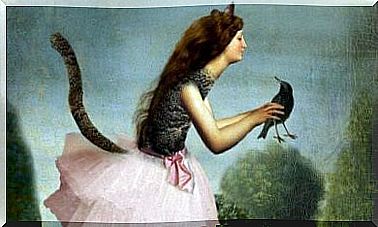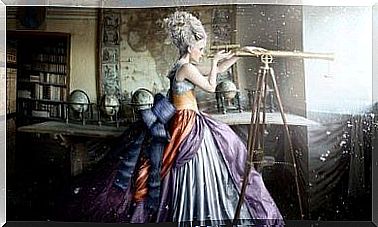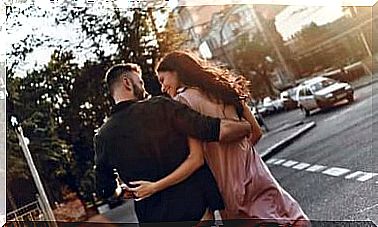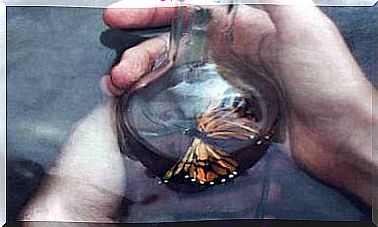Using The Power Of The Paradox To Change One’s Attitude

A paradox is a seemingly nonsensical statement that deviates from the truth assumed by the general public. Paradoxes are assertions made up of linguistic images and expressions that seem to contradict each other. Paradoxes are of many types. They are located in the fields of logic, infinity, probability, physics and geometry, among others.
Many of these paradoxes occur in our everyday life, although we are not aware of them. A classic paradox, for example, is the goat problem. Do you know it?
The goat problem
The goat problem or the Monty Hall dilemma is a question that can be solved using probability theory. It is from an entertainment show on US television. In this game show, originally hosted by Monty Hall, the contestant can choose one of three closed doors.
Behind one of the doors is the main prize, a car, behind the other two there are goats as consolation prizes. When the candidate has selected a door, the moderator, who knows what is behind each of the doors, opens one of the doors that the candidate did not choose. Behind this is a goat. Then he gives the candidate the opportunity to change his original election again. In this situation, the candidate has two options. Either he now decides on the remaining door or he stays with the door that he had selected first.
The question is: should the candidate stick to their original election or should they switch doors? Does that make a difference?
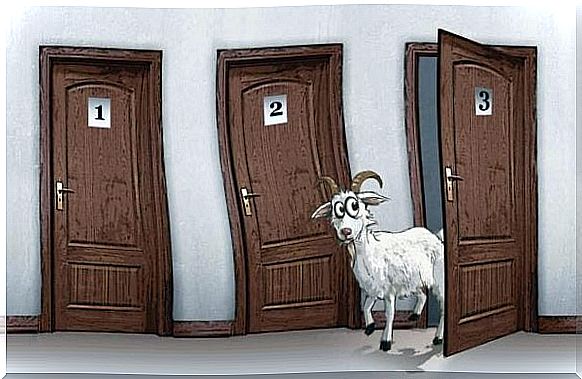
Yes it does make a difference. The better option is not to stick with the original choice. At least that’s what the statistics say.
The probability that the candidate chose the door behind which the car is hidden in his original election is one third. Therefore, the probability that the car is behind one of the two doors that he did not choose is two-thirds. If the moderator opens a door with a goat behind it, that door is no longer taken into account, so the probability there is zero. With this zero, the two-thirds probability is now transferred to the door that the candidate had not initially decided on and that is still closed.
A common mistake is to assume that each of the two remaining doors now has a 50% chance for the car. But the first choice of the candidate also took into account the door that the moderator opened afterwards. The choice of the moderator is not made by chance:
- If the candidate chooses the door with the car behind it right from the start, the moderator can open either of the other two doors. If the candidate then changes his original election, he loses the car. The probability of this scenario is one third.
- However, if the candidate initially decided on a door with a goat behind it, which happens in two thirds of all cases, the moderator can only select one more door to open – the second door with the goat behind it. In this case, the car is behind the remaining door.
To sum up, if the car is behind the door that the candidate first picked, then if he sticks to his original choice, then he wins it (with a probability of one third). But if his first choice was a door with a goat behind it, he can win the car by choosing another door (with a two-thirds chance). Therefore, the candidate should change his choice again if he wants to increase his chances of winning the car.
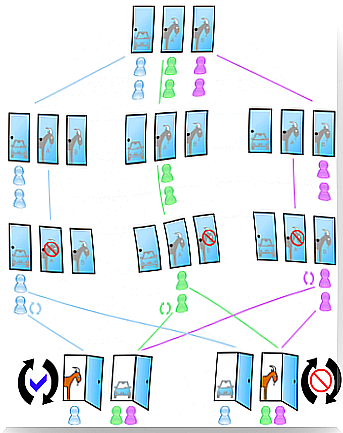
The paradoxical thought
The paradoxical idea is to explain absurdities from a perspective that seems obvious. With the help of paradoxical thought, one can change the attitude of some people. For example, making fun of your attitude using paradoxical thought may expose your beliefs as irrational or worthless. As a result, you may begin to question your attitude to the point where you change your beliefs. Let’s look at another example:
A group of Israeli scientists conducted an experiment in a small town. This small town was known for its high election results for the extreme right. They ran a campaign based on the paradoxical thought. In this way, the scientists hoped to weaken the right-wing sentiment of the more radical voters.
For six weeks they exposed the residents of the small town to their psychological campaign. There were posters along the streets. In addition, promotional items such as globes, badges and T-shirts were distributed. There were also videos on the Internet and public announcements. The messages on the posters and badges played with statements and sentences such as “Without the conflict there will never be justice … In order to achieve justice, we probably need the conflict.” and “In order to become a hero, we probably need the conflict.” Similar messages with thematically related images were shown in the videos.

After the campaign, the scientists conducted surveys to determine public opinion on the Israeli-Palestinian conflict. They compared the results of the area in which they carried out the psychological campaign with the opinions of residents in other areas that were not exposed to the campaign.
The people interviewed were unaware that they were part of a psychological experiment. The scientists found that the perception of the conflict was similar in all but one of the groups. The voters who originally supported the extreme right and who had been suspended from the campaign showed a decreased willingness to continue to support the conflict over the long term.
Intervening through the paradoxical thought had an impact on the beliefs and attitudes of the right wing participants. They subsequently showed less willingness to support aggressive politics, but increased respect for more conciliatory political approaches. If you pervert people’s ideas into the absurd, you can weaken warmongering preferences.
